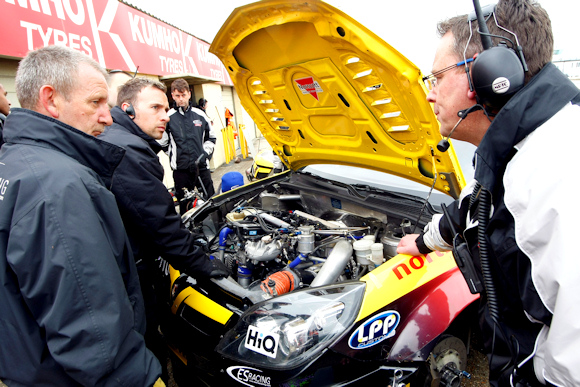Three seasons with NGTC engines from Swindon
Swindon Engines are TOCA’s Next Generation Touring Car engine supplier for the British Touring Car Championship. TouringCarTimes.com recently spoke to Swindon Engines’ Managing Director Raphaël Caillé about the project.
In what is their third season in the BTCC, Swindon have taken two of the three pole positions courtesy of Dave Newsham’s Team ES Racing Vauxhall Vectra and Jason Plato’s Triple Eight Race Engineering MG6, as well as a win at the hands of the latter driver.
When asked whether it was rewarding to be achieving such results in only their third season in the C, Caillé had the following to say: “It is certainly very rewarding, well done to both Jason [Plato] and [Dave] Newsham. I think what it has proved for us as an engine supplier is that we deliver consistent performance across all our customers, but also that we give them something in terms of performance that is predictable so they can use and get the best out of it in qualifying and in the race.”
Caillé believes that Swindon have settled into the championship: “It is easier because we have learnt how to operate within the BTCC with the TOCA engine project and we’ve learnt to really develop the product. The TOCA engine is a one-fits-all product. I think that the great thing about it is that it can go to a championship winning team like Triple Eight Race Engineering or it can go to somebody very new to the BTCC making a new car themselves.”

The BTCC teams that use Swindon’s engines have the option of either leasing or buying them and each has advantages: “The advantage of buying is that for the season the team has got an asset, they have got a car with an engine. The advantage of leasing is that they’ve got no responsibility, it’s all our responsibility. So it depends on what the team would like. From a cost point of view, including the required support, on a one year basis it’s more expensive to buy [than it is to lease], but over two years it is less expensive to buy.”
The Swindon Engines team is kept busy over a BTCC race weekend: “We have four staff to cover say ten cars and they are a combination of technicians and engineers. So some of them work on the cars, on the engines, make sure that everything is as it should be and perhaps replace a sensor or a little part if it needs replacing. The others are engineers who work on calibration, which is very important with the turbocharged engine. We all have a limited boost level and so the game is to run as close as possible to this limit. That is done by electronic adjustment plus the rest of the mapping and then there is also the data acquisition analysis. We analyse all the data we get in the black boxes of each car and make sure that the temperatures, pressures and all the paramenters of the engine are what they should be.”

Work on the NGTC engines between meetings is more variable: “It goes up and down. Certainly motor racing is now structured in such a way that things happen later and later. So the pre-season which is February and March is extremely busy because we have to do everything, prepare everything for everybody in a short period of time. Then between races there is always something to do because there are always cars that have an accident or situations like we had with Newsham at Donington where he damaged the front bumper and the radiator during the race and that in turn overheated the engine and damaged it. So there is always something to do but it really goes up and down. The engine has to last a long time with only two engines are allowed for the season.”
Effectively the low cost engine option of the championship Caillé is happy with the progress that Swindon has made relative to the specialist engine developers: “It is by far the most cost efficient option because the teams don’t have to find the development budget to develop their own engine and I think it’s fair to say that at least half our customers wouldn’t be on the grid if the TOCA engine was not available. For us it works as a business if we have good quantities of cars. It’s all based on making that engine for as many cars as possible so that we can reduce the impact of development costs. In addition we provide the teams with a level of service and reliability and engineering that is certainly top level. So for most of them it’s a great help and it can perhaps enhance their engineering capabilities.”










